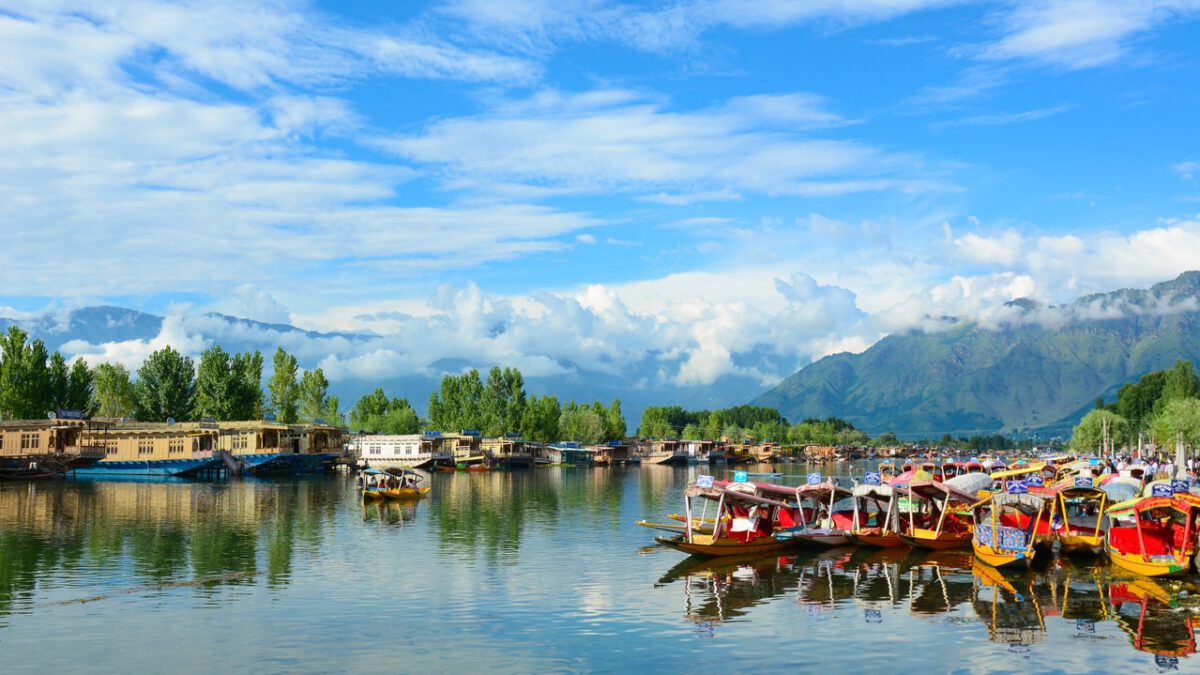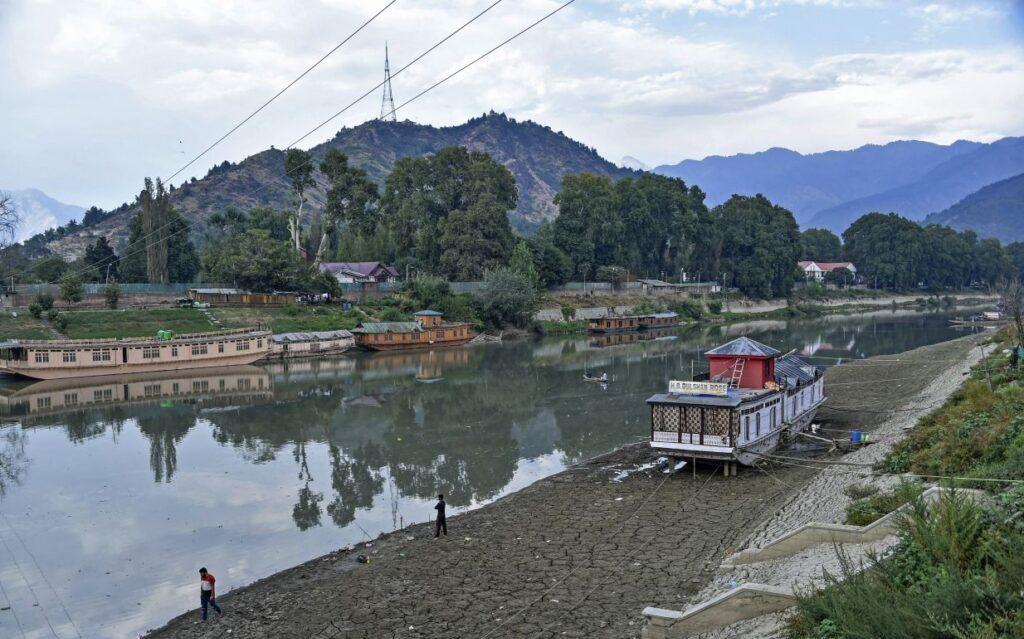Thajiwas Glacier: A Melting Gem in the Himalayas – A Call to Action
By: Javid Amin
The majestic Thajiwas Glacier, nestled amidst the breathtaking Himalayas in Sonmarg, Kashmir, is facing a critical threat. Once a pristine haven for exploration and a symbol of natural beauty, the glacier is now a chilling reminder of the devastating impact of climate change and human activity.
This article delves deeper into the concerning situation at Thajiwas Glacier, exploring the recent incidents, the scientific evidence, and the potential consequences. It also proposes a multi-pronged approach for its preservation, emphasizing the need for immediate and collaborative action.
A Paradise Under Threat
Thajiwas Glacier, perched at an altitude of 3000 meters, was a crown jewel of Sonmarg. Its year-round snow cover made it a magnet for tourists and locals alike. Schoolchildren embarked on educational treks, families enjoyed picnics amidst the icy beauty, and adventure seekers reveled in the thrill of exploration.
However, this idyllic picture has been marred by a series of alarming events. A recent incident in May 2024 tragically claimed the life of a tourist who fell into a snow cavity. Just prior to this, in February, scientific reports painted a grim picture, highlighting the accelerated retreat of the glacier – a 34% reduction in mass since 1992. Experts warn that unusually dry winters could further exacerbate the situation, leading to faster melting.
These incidents and scientific data point towards a critical reality – Thajiwas Glacier is losing its battle against climate change and human intervention.
A Perfect Storm: Climate Change & Human Impact
The decline of Thajiwas Glacier is not a singular phenomenon. It’s a consequence of a confluence of factors:
- Rising Temperatures: Global warming is causing a rise in average temperatures, leading to increased glacial melt rates.
- Reduced Snowfall: Warmer winters result in less snowfall, depriving glaciers of the replenishment they need to maintain their mass.
- Human Activity: Unsustainable tourism practices like unregulated trekking, pony rides, and littering contribute to environmental degradation and accelerate glacial melt.
The combined effect of these factors is a visible retreat of the glacier, transforming its once pristine landscape into a fragile ecosystem.
Beyond the Glacier: Far-Reaching Consequences
The plight of Thajiwas Glacier extends far beyond the realm of environmental concerns. The glacier plays a vital role in the region’s ecological balance and human well-being:
- Water Security: The meltwater from Thajiwas Glacier feeds the Sindh River, a critical source of irrigation for 70% of Kashmir’s population engaged in agriculture. Reduced glacial mass translates to diminished water availability, threatening agricultural livelihoods and food security.
- Hydropower Generation: The glacier contributes to the water levels of rivers that feed hydropower plants, a crucial source of clean energy in the region.
- Tourism: A healthy Thajiwas Glacier is a cornerstone of Kashmir’s tourism industry. Its decline not only threatens the natural beauty that attracts visitors but also jeopardizes local livelihoods dependent on tourism revenue.
A Call to Action: Preserving Thajiwas for the Future
The situation at Thajiwas Glacier demands immediate and collaborative action. Here’s a roadmap for a multi-faceted approach:
- Community Engagement: Local communities hold the key to preserving their natural heritage. Harnessing their traditional knowledge and cultural practices in environmental conservation efforts can be invaluable. Educational programs and workshops can foster a sense of ownership and responsibility towards the glacier.
- Sustainable Tourism: A paradigm shift in tourism practices is essential. Limiting visitor numbers, implementing strict waste management protocols, and promoting eco-friendly activities like nature walks and clean-up drives can help minimize environmental damage.
- Reforestation Efforts: Restoring the ecological balance in areas surrounding the glacier is crucial. Planting native trees like pines and firs can help absorb carbon dioxide and create a cooler microclimate. Implementing reforestation projects with the involvement of NGOs, volunteers, and schools can create a positive impact.
- Renewable Energy: Reducing dependence on fossil fuels and promoting clean energy sources like solar, wind, and hydro power can significantly reduce greenhouse gas emissions, thereby mitigating climate change’s impact on the glacier.
- Scientific Research & Monitoring: Understanding the glacier’s behavior and the factors affecting it is critical for developing effective conservation strategies. Establishing monitoring stations to collect data on glacial thickness, melt rate, and climatic conditions can provide valuable insights. Investing in research in glaciology, climate science, and environmental science is essential.
- Technological Solutions: Exploring emerging technologies like artificial snowmaking to slow down glacial melt can be considered as a long-term strategy. Satellite imagery can be used to monitor changes in the glacier’s size and health over time.
Conclusion: A Race Against Time
The fight to save Thajiwas Glacier is a race against time. Every action taken today has the potential to secure a future where this magnificent natural wonder continues to grace the Himalayas. Collaboration is key. National and local governments, environmental organizations, researchers, tour operators, and local communities must come together to spearhead a comprehensive conservation plan.
Individual actions, however small, can also contribute to the collective effort. Travelers can choose eco-friendly tour operators who prioritize responsible tourism practices. Consumers can make conscious choices to reduce their carbon footprint and support initiatives combating climate change.
Saving Thajiwas Glacier is not just about preserving a tourist destination; it’s about safeguarding the ecological balance of a region and securing the well-being of future generations. We must act swiftly and decisively to ensure that the majestic Thajiwas Glacier continues to be a source of life, beauty, and inspiration for years to come.
Empowering Action:
This article is not merely a wake-up call; it’s an invitation to participate in the solution. Here are some resources and ways you can get involved:
- Contact your local representatives: Advocate for policies that prioritize environmental protection and support renewable energy initiatives.
- Support environmental organizations: Donate to or volunteer with NGOs working on glacial preservation and climate change mitigation.
- Travel responsibly: Choose eco-friendly travel companies and minimize your environmental impact while exploring.
- Spread awareness: Share information about the plight of Thajiwas Glacier and inspire others to take action.
Let’s work together to ensure that future generations can experience the awe-inspiring beauty of Thajiwas Glacier, not just in photographs, but as a testament to our collective responsibility for the planet.



